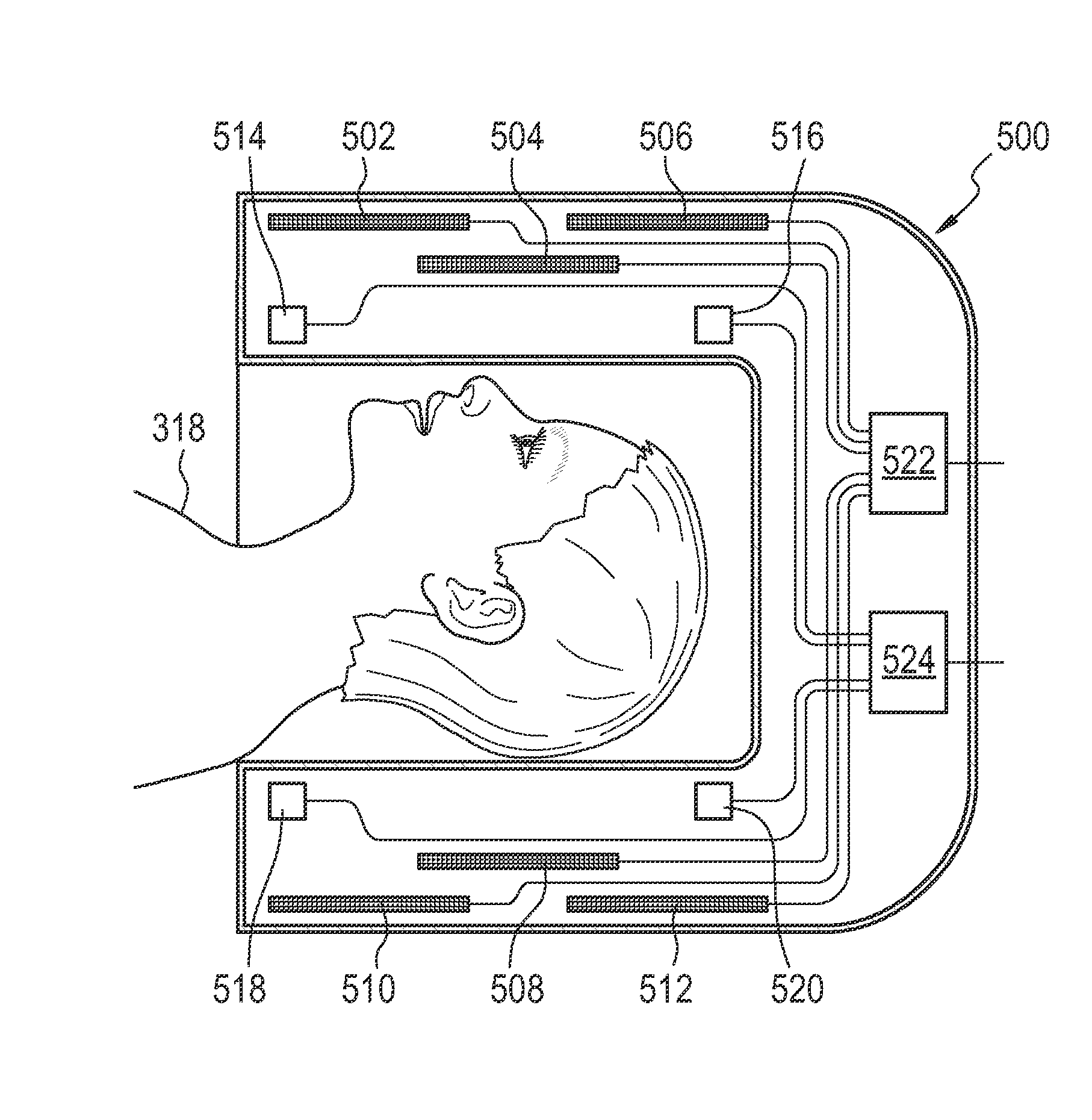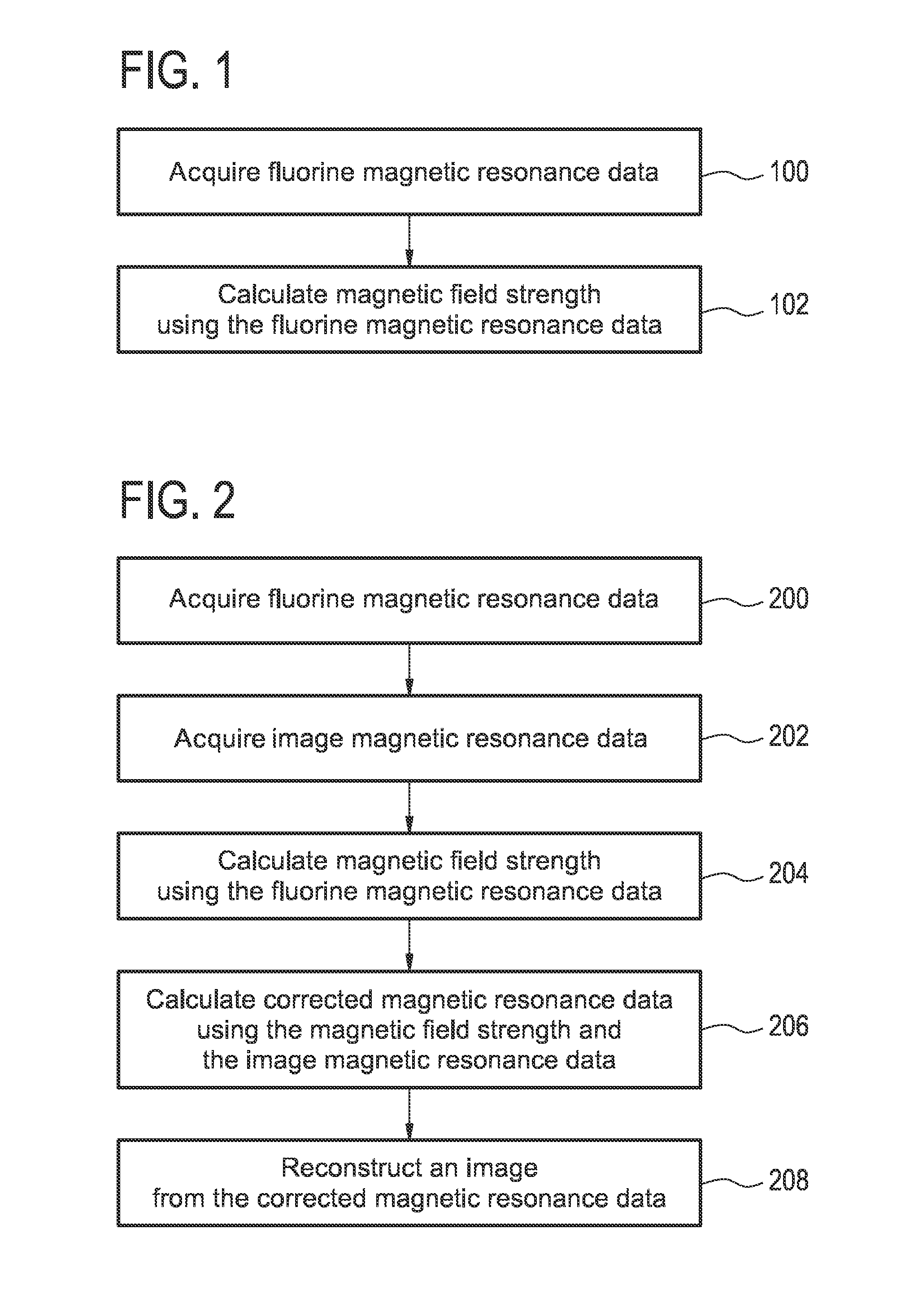Magnetic field probe for MRI with a fluoroelastomer or a solution of a fluorine-containing compound
a technology of fluorine-containing compounds and magnetic field probes, which is applied in the direction of reradiation, measurement using nmr, instruments, etc., can solve the problems of affecting the signal-to-noise ratio, exceedingly short t2 relaxation time in solid form, and difficult to encapsulate substances, etc., to achieve stable oxidation and reduction
- Summary
- Abstract
- Description
- Claims
- Application Information
AI Technical Summary
Benefits of technology
Problems solved by technology
Method used
Image
Examples
Embodiment Construction
[0086]Like numbered elements in these figures are either equivalent elements or perform the same function. Elements which have been discussed previously will not necessarily be discussed in later figures if the function is equivalent.
[0087]FIG. 1 shows a flow chart which illustrates a method according to an embodiment of the invention. In step 100 fluorine magnetic resonance data is acquired. Next in step 102 a magnetic field strength is calculated using the fluorine magnetic resonance data. In some embodiments the fluorine magnetic resonance data is acquired from multiple field probes. In this case the magnetic field strength at multiple spatial positions may be calculated. In addition the fluorine magnetic resonance data may be acquired at multiple time periods or continuously through the acquisition of image magnetic resonance data. As such the magnetic field strength may be spatially dependent and / or temporally dependent. That is to say a multi-dimensional magnetic field map whi...
PUM
 Login to View More
Login to View More Abstract
Description
Claims
Application Information
 Login to View More
Login to View More - R&D
- Intellectual Property
- Life Sciences
- Materials
- Tech Scout
- Unparalleled Data Quality
- Higher Quality Content
- 60% Fewer Hallucinations
Browse by: Latest US Patents, China's latest patents, Technical Efficacy Thesaurus, Application Domain, Technology Topic, Popular Technical Reports.
© 2025 PatSnap. All rights reserved.Legal|Privacy policy|Modern Slavery Act Transparency Statement|Sitemap|About US| Contact US: help@patsnap.com



